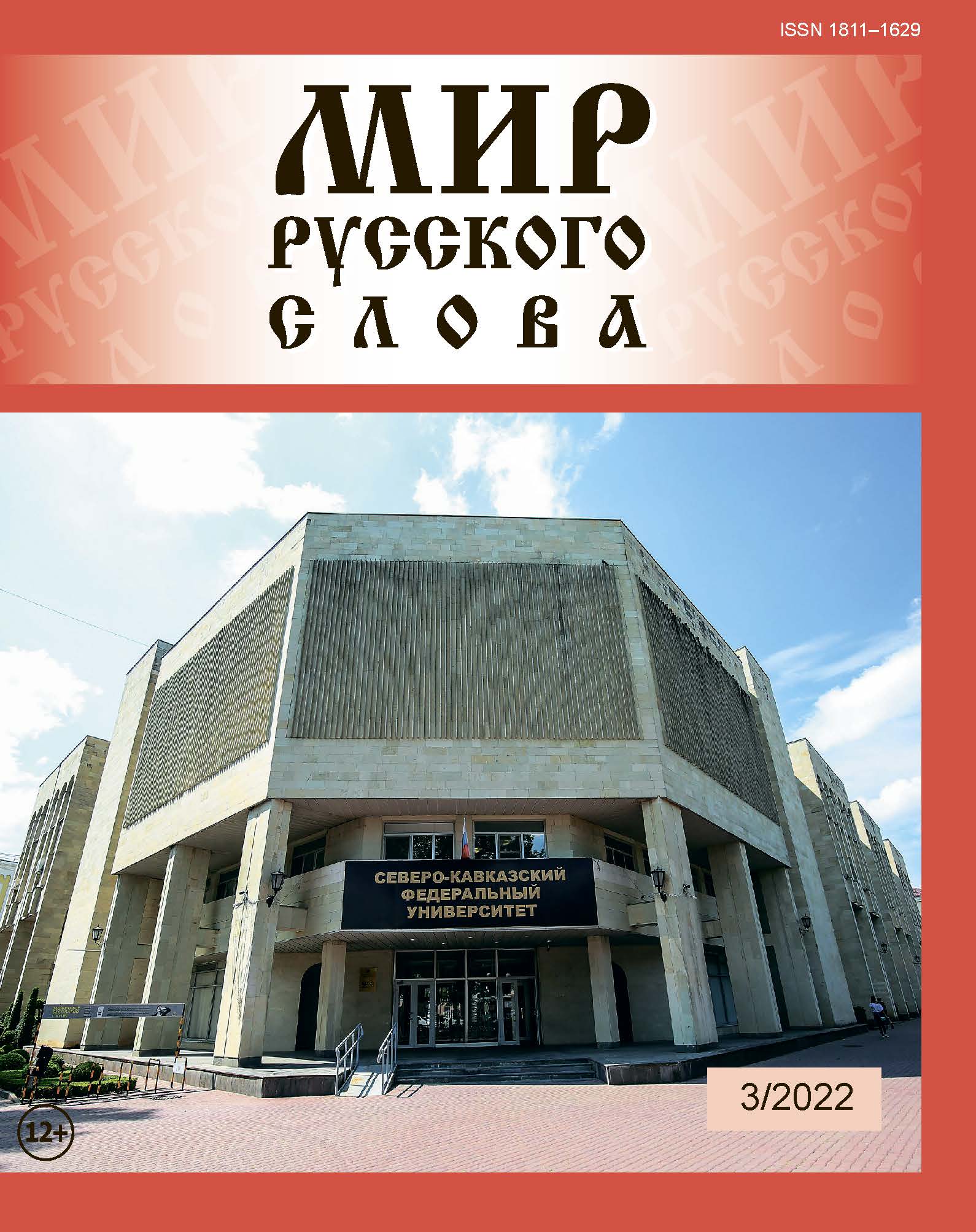Confessional discourse of the end of the 20th century: on the example of the stories of Natalia Tolstaia and Tatiana Tolstaia)
DOI:
https://doi.org/10.24412/1811-1629-2022-3-65-71Abstract
The confessional genre / discourse occupies a significant place in Russian literature, without
changing its essence, but undergoing temporary changes. The comparison of works in this genre
related to the 19th and 20th centuries is of interest in the aspect of identifying stable genre features
and those changes that are the result of temporary transformations. The article attempts to consider
the compositional-speech structure of the confessional discourse of the 20th century with attention
to its illocutionary components in comparison with the confessional text of the 19th century. In the
course of the study, it was possible to establish the stability of the compositional-speech structure of
literary confessions of the 90s of the 20th century and the 19th century, based on the presence in those
and other texts of complexes of an informative and emotional nature, consisting in the “stimulusreaction” relationship and realizing the “modus of speaking and subjective-evaluative mode». Within the framework of informative communicative blocks, along with selfinformative ones, including information about the past and present of
the narrator, in texts, for example, L. N. Tolstoy, mental-psychological
ones are distinguished, manifesting the stream of consciousness of
the narrator in the past, which are absent in modern texts. Possessing
such features as “synsemanticity”, “evaluation” and “generalization”,
emotional complexes according to the type of communicative
intention made it possible to distinguish emotional-commenting
(emotional reaction to factual information) and affi rmative-stating
(evaluation-stating). Emotional complexes in modern confession also
show a tendency towards generalization of judgment, which was one
of the differential signs of the corresponding formations in confession
of the 19th century. At the same time, there is a complication of the
speaker's speech behavior due to the expansion of the addressee's
knowledge, an increase in his ability to abstract and distance himself
from what is being reported. In addition, narrative series appear
in modern confession, differing in associativity and orientation to the
socio-cultural competence of the modern perceiver.
Keywords:
peaker, recipient, confessional discourse, compositional-speech structure, illocutionary component, speech behavior
Downloads
Downloads
Published
How to Cite
Issue
Section
License
Articles of "The World of Russian Word" are open access distributed under the terms of the License Agreement with Saint Petersburg State University, which permits to the authors unrestricted distribution and self-archiving free of charge.




